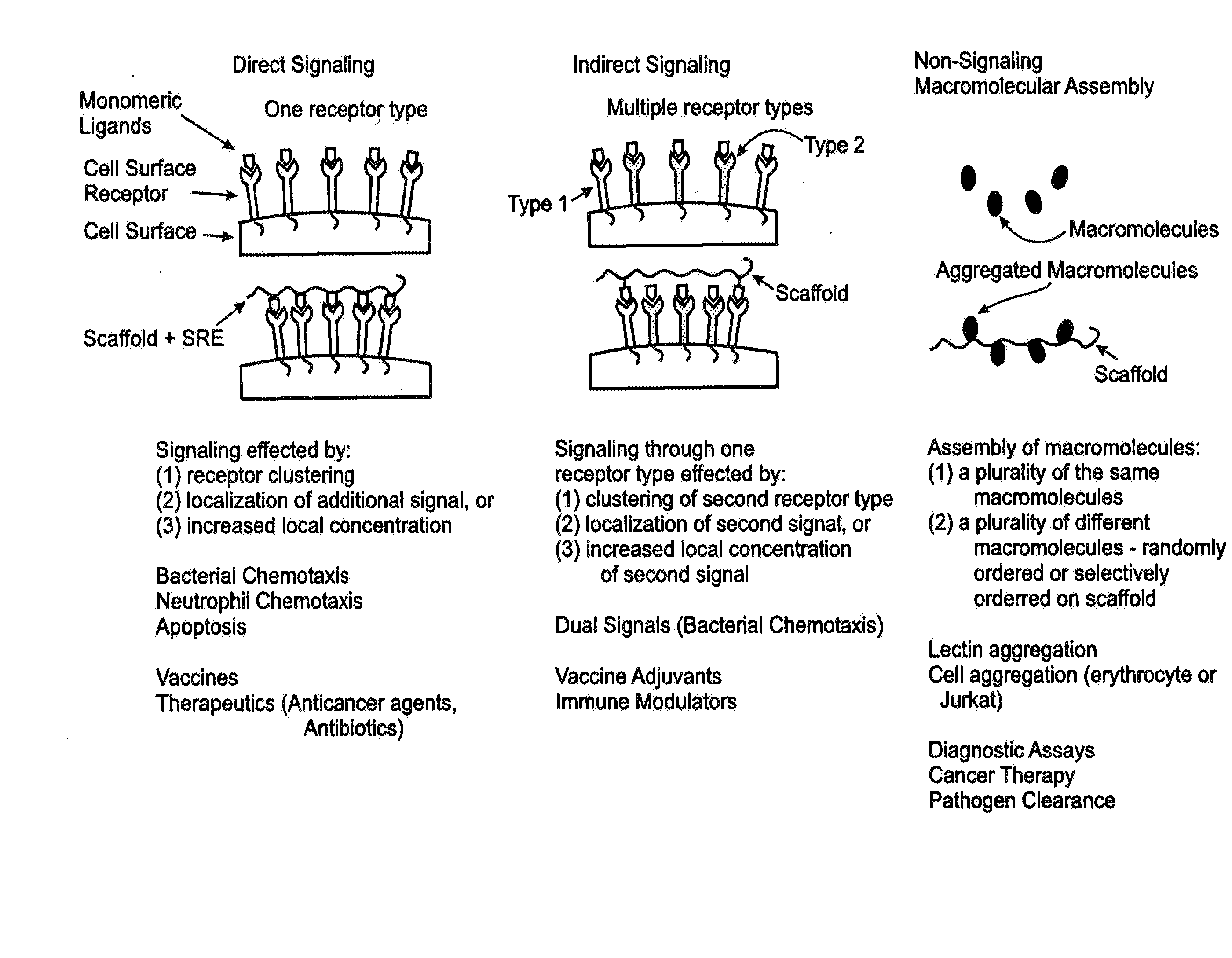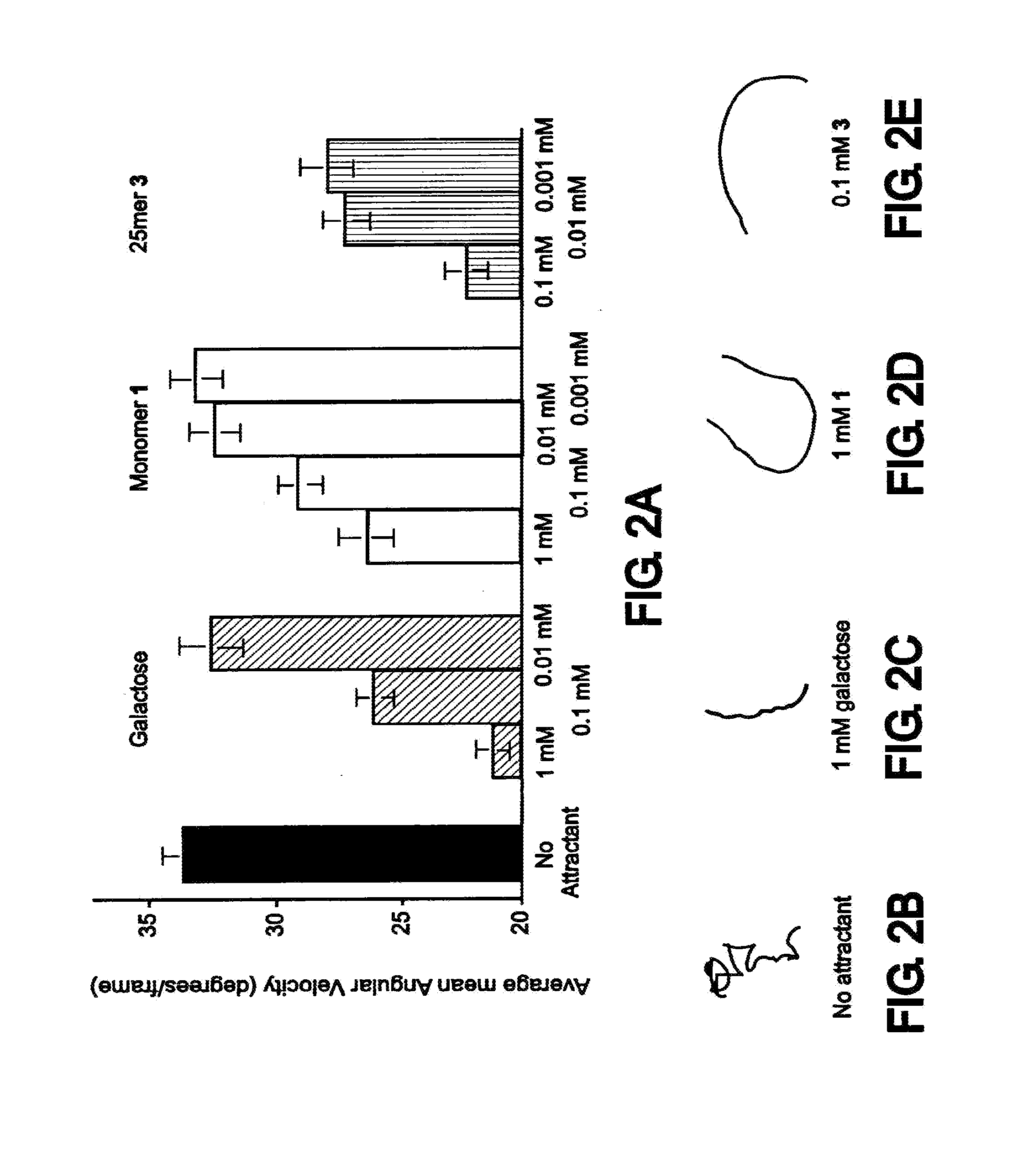Methods and Reagents for Regulation of Cellular Responses in Biological Systems
a biological system and cellular response technology, applied in the direction of antibody medical ingredients, depsipeptides, peptide/protein ingredients, etc., can solve the problems of lack of biological activity of monovalent ligands, inability of multivalent ligands to explore this fine-tuned control in biological systems,
- Summary
- Abstract
- Description
- Claims
- Application Information
AI Technical Summary
Benefits of technology
Problems solved by technology
Method used
Image
Examples
Embodiment Construction
[0045] The multivalent ligands of this invention are molecular scaffolds to which a plurality of functional or structural groups, particularly RE and / or SREs, are bonded, to present a display of the functional or structural groups in a productive manner. The scaffold can in general be formed from any chemical or biological species that provides the desired orientation of display. In addition to linear arrays, the scaffolds can be chosen to provide arrays of functional groups with selected non-linear presentation. See, for example, the various non-linear scaffold structures illustrated in FIG. 8.
[0046] The functional or structural groups may be bonded to the scaffold in a symmetric or unsymmetric array. The scaffold may comprise a relatively small organic molecule, such as an aromatic ring system (including benzene, naphthalene and fused and non-fused aromatics). Various fused aromatic systems can provide a wide range of different display orientations with functional groups bonded a...
PUM
| Property | Measurement | Unit |
|---|---|---|
| Structure | aaaaa | aaaaa |
Abstract
Description
Claims
Application Information
 Login to View More
Login to View More - R&D
- Intellectual Property
- Life Sciences
- Materials
- Tech Scout
- Unparalleled Data Quality
- Higher Quality Content
- 60% Fewer Hallucinations
Browse by: Latest US Patents, China's latest patents, Technical Efficacy Thesaurus, Application Domain, Technology Topic, Popular Technical Reports.
© 2025 PatSnap. All rights reserved.Legal|Privacy policy|Modern Slavery Act Transparency Statement|Sitemap|About US| Contact US: help@patsnap.com



